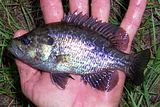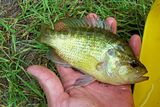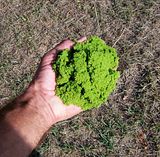In a different thread daveneely was very helpful in pointing out that the Green Sunfish I was targeting as the apex predator were not indigenous. With this new information I've switched to Warmouth as the "big fish" for this pond, but the rest is up in the air. For better or for worse Mosquitofish are in all of the surrounding ponds and have not been stocked by the owners. They are also present in the local creeks. I wouldn't choose to stock them, but my guess is that they will stock themselves.
When it comes to stocking the pond I run into a couple of issues:
1. I don't know of a good source of information on native species.
2. I don't have experience or tools for collecting wild fish.
My neighbor has a second pond with a healthy WM population so I can collect them easily by fishing. There are several small creeks nearby that I can access fairly easily, including one which is so low due to drought conditions that it has become a series of stagnant pools.
My purpose in starting this thread is to ask for guidance in this project and also to document it for the pond owner. My hope is that the owner and his family can enjoy fishing for the WM, and that maybe they will find value in having something different than the standard Largemouth Bass/Bluegill pond. Any advice that you can offer to help guide me through this project will be appreciated.

Here are some of the fish I'm collecting from my neighbor's big pond. I've learned to handle them less since these photos were taken.













